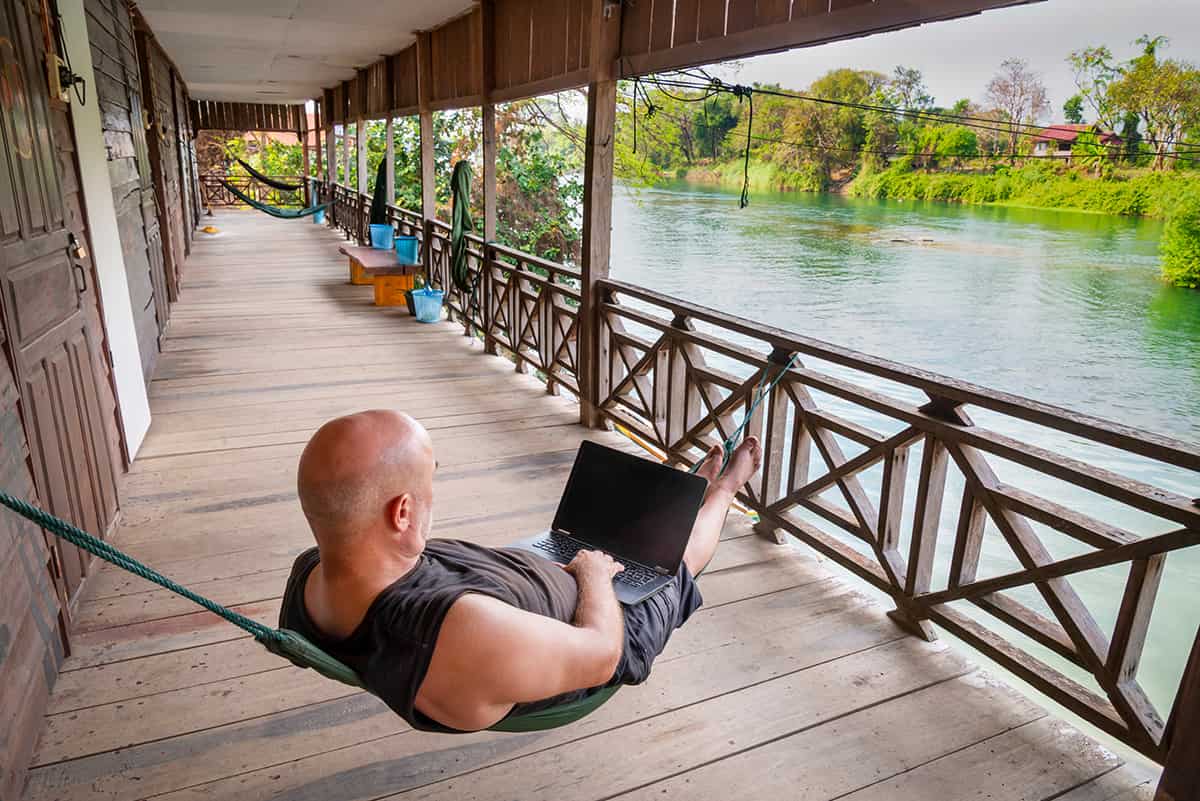More countries are seeing the benefits of having professionals who work remotely come for extended stays.
Puerto Rico’s Governor Pedro Pierluisi signed into law in January the Act to Facilitate the Implementation of Remote Work in Private Enterprise, to encourage outside investment. Thus, the US territory joined 22 sovereign nations and territories in Latin America and the Caribbean that have enacted legislation to officially welcome remote workers.
Last year, Nomad List, an online community of self-identified location-independent workers, named Buenos Aires the best destination in the Americas for digital nomads. The city’s government claims it received 72,450 digital nomads in 2022 compared to 9,600 in 2021, based on incentives to attract remote workers.
Many high-earning, highly educated individuals from wealthy countries are able to and prefer to work remotely, not always from their homes. Companies that need the skills or knowledge these people possess need to accept employees working outside the office or offer it as a perk.
“Entities that engage with digital nomads have more satisfied workers,” says Nicole Cieslicki, senior director of International Services at labor-sourcing provider MBO Partners.
For sundry lifestyle and economic reasons, increasing numbers of people want to spend all or most of their time outside their native countries. More and more are choosing Latin America.
Three of the world’s top 10 global digital nomad hotspots are in Latin America: Mexico, Costa Rica and Colombia, according to the authors of the Digital Nomad Visa Whitepaper, published last December by consultancy Remote Commons. Meanwhile, according to Nomad List data, Buenos Aires, Mexico City and Medellín are among the top 10 cities in the region. Panama and Uruguay are getting special attention from his clients, says Mikkel Thorup, CEO of consultancy Expat Money. Women nomads rank Costa Rica, Mexico, Chile and Peru among their 10 favorite countries, according to the online “knowledge hub” on team-collaboration platform provider Pumble.
Studies and anecdotes show that people flock to cities such as Medellín; Rio de Janeiro; Mexico City, Playa del Carmen and Oaxaca in Mexico; and Buenos Aires. The fastest-growing hubs in the Americas in 2023 were Montevideo, Uruguay; Santiago, Chile; and Florianópolis, Brazil, according to another Nomad List study.
Finding reliable numbers for remote workers globally is challenging. The Global Digital Nomad Study reported by the blog A Brother Abroad estimates that as many as 35 million might be floating around the world. For the US, where the best numbers seem to be available,17.3 million American workers now describe themselves as digital nomads, up by 131% between 2019 and 2022 and now up another 2% from 2022, according to data from MBO Partners.
The only readily available official figures seem to come from the US State Department’s Bureau of Consular Affairs’ 2022 Overseas Citizen Population Analysis, which estimated nine million US citizens living overseas in 2019.
The Birth Of Nomads
Working outside of the employer’s place of business has a long history. Still, the digital nomad story begins in the 1990s with the rise of the internet and mobile computing, according to the authors of the Remote Commons white paper.
Before the advent of “teleworking,” the highest-profile remote workers were foreign correspondents. Outside the news media, typical expatriates were sent on assignment by a multinational company for an extended stay at a subsidiary, according to MPO Partners’ Cieslicki. Benefits included housing and private schools for the kids. “Many of those packages don’t make sense [financially for the firms, anymore],” she adds.
In the 1990s, high-end tech professionals, notably computer engineers, found nothing to stop them from working from wherever. This was facilitated by advances in communications technology, notably the advent of Skype in 2003, which slashed phone costs, observed Bobby Casey, a managing director at consultancy Global Wealth Protection (GWP).
Around the same time, most major urban areas worldwide had decent access to the internet. The new class of workers took their name from Carl Malamud’s 1992 travelouge, in which he described a “digital nomad.”
The next wave of nomads consisted of so-called influencers who bragged and blogged about how to do it. Then came the Covid-19 lockdowns. Remote work in the US jumped from 4% to 45% in March 2020, according to Liam Martin, co-founder and chief marketing officer of productivity-software vendor Staff.com. “That was the biggest change since the Industrial Revolution, which took 80 years to happen.”
“I wrote that Covid-19 was the best thing to happen to humanity,” says GWP’s Casey. “I got death threats. But it exposed the reality that remote work is where it’s at.”
After the pandemic came the Great Resignation. Now, even many high-level executives balk at returning to the office grind.
The term “digital nomad” has become a catch-all category for remote workers who spend some time away from home. They include conventional expatriates, people with a base who travel frequently, and snowbirds who escape frozen winter climes. They also include freelancers, independent contractors, entrepreneurs, business owners, and part-time and full-time employees. Some move around a lot, while some stay put forever or for extended periods.
Author and travel writer Tim Leffel says only 5% of the more than 10,000 subscribers to his Nomadico newsletter are purely location independent.
Attracting The Keyboard Warriors
According to the Remote Commons authors, there are five main reasons why people opt for a seminomadic lifestyle: flexibility and autonomy, cost of living, adventure and travel, career development, and personal growth.
“The main reason is money,” says Milly Arceo of consultancy Legally in Mexico, based in Playa del Carmen, on the Yucatán Peninsula. “Their money has more value here. Properties are cheaper, and they can live a better life.”
The Baltic state of Estonia pioneered an e-residency program in 2014 and became the first European country to offer a digital nomad visa, in August 2020. Barbados created a watershed moment in June 2020 with its “welcome stamp” 12-month work visa, which exempts the nomad from Barbadian income tax. Dozens of countries soon followed suit.
Despite all the hubbub about nomad visas, experience shows they don’t matter much. Ecuador’s government reported that they had issued only 113 of them in the 16 months prior to July 2023. Yet just five minutes in the Mariscal neighborhood of Quito provides sufficient signs of a much greater “gringo” presence.
Rules vary by country; but generally, three fast-track ways exist to obtain a medium- or long-stay visa. Would-be nomads need to prove a certain level of annual earnings from outside the country, ranging from $12,240 in Colombia to $100,000 in the Cayman Islands. They may need to prove sufficient passive income from a pension or interest, dividends, rents, payments or royalties. Or, in some places, they can directly invest in real estate or a local business.
“While digital nomad visas supposedly abound, few offer enough simplicity and flexibility to compete with tourist visas,” write the Remote Commons authors. “Working on tourist visas may be technically illegal, but enforcement is practically nonexistent. Most digital nomads come from wealthy countries with strong passports like the US, UK or Germany. So tourist visas remain the most attractive option unless they plan longer stays.”
A cottage industry of consulting firms for nomads, their employers, and their clients is emerging. For recipient countries, it is hard to pin down the economic effects. Since nomads receive their income from abroad, there is no threat to domestic jobs. Instead, the effect would seem like that of remittances—a diffuse boost to businesses that run the gamut from homebuilders and furniture makers to bars and restaurants.
The average digital nomad makes nearly $125,000 annually, according to data on Pumble. When the minimum wage in a relatively developed country like Brazil comes to less than $300 a month, it is easy to understand why local policymakers might want that injection of nomad spending power.




